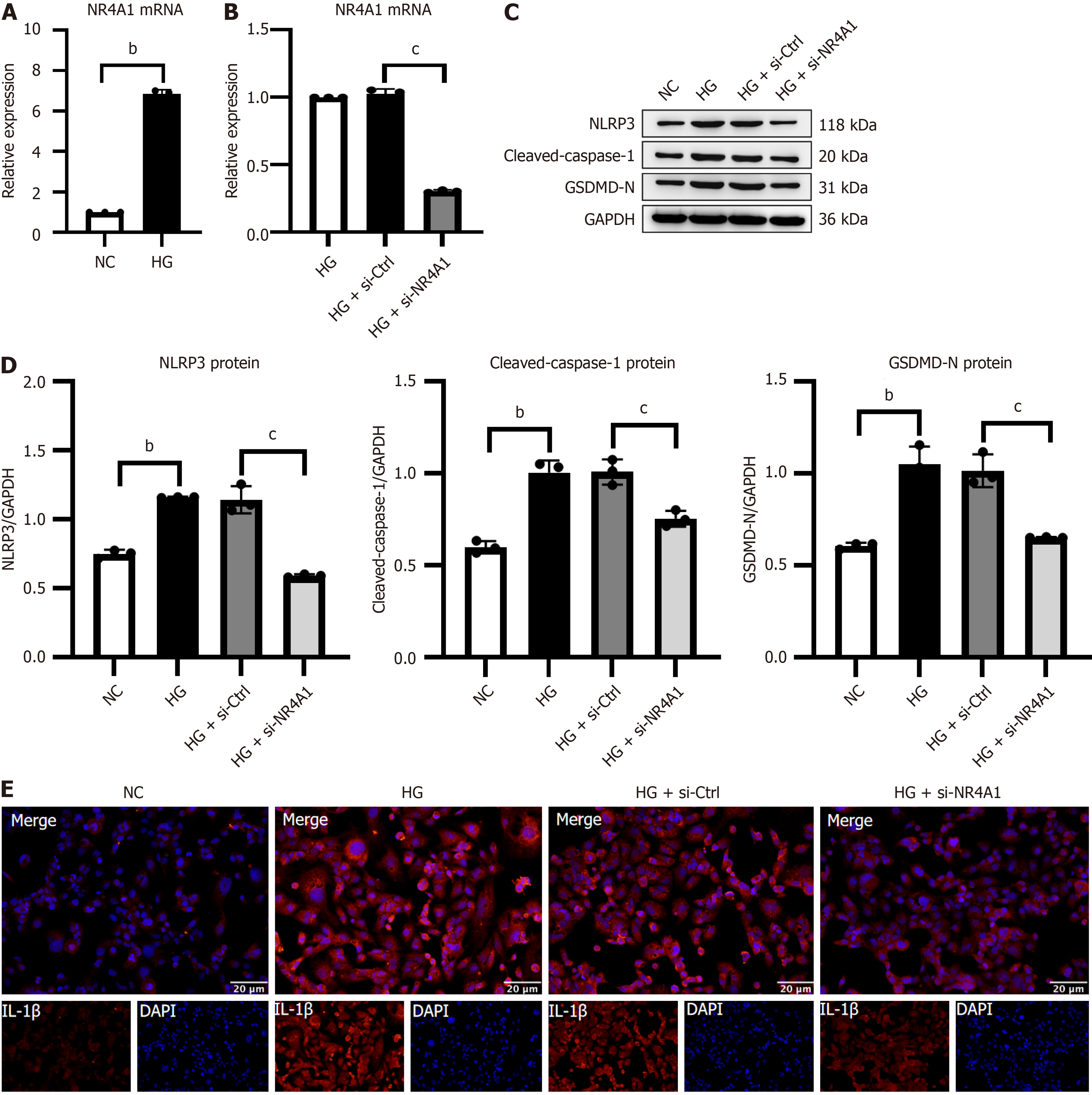Copyright
©The Author(s) 2025.
World J Diabetes. Mar 15, 2025; 16(3): 97544
Published online Mar 15, 2025. doi: 10.4239/wjd.v16.i3.97544
Published online Mar 15, 2025. doi: 10.4239/wjd.v16.i3.97544
Figure 5 Silencing of NR4A1 attenuated NOD-like receptor protein 3-mediated pyroptosis in high glucose-stimulated HK-2 cells.
A and B: Quantitative real-time PCR of NR4A1 mRNA expression and siRNA transfection efficiency in HK-2 cells; C and D: Illustrative western blotting and integrated density study of NOD-like receptor protein 3, cleaved-caspase-1, and gasdermin D N-terminal structural domain in HK-2 cells; E: Illustrative immunocytochemistry images of interleukin-1β in HK-2 cells. Scale bar = 20 μm, n = 3. bP < 0.05 vs NC, cP < 0.05 vs high glucose + negative control. GSDMD-N: Gasdermin D N-terminal structural domain; NC: Normal control; HG: High glucose; NLRP3: NOD-like receptor protein 3; NR4A1: Nuclear receptor subfamily 4 group A member 1; si-NR4A1: SiRNA targeting nuclear receptor subfamily 4 group A member 1.
- Citation: Li JM, Song ZH, Li Y, Chen HW, Li H, Yuan L, Li J, Lv WY, Liu L, Wang N. NR4A1 silencing alleviates high-glucose-stimulated HK-2 cells pyroptosis and fibrosis via hindering NLRP3 activation and PI3K/AKT pathway. World J Diabetes 2025; 16(3): 97544
- URL: https://www.wjgnet.com/1948-9358/full/v16/i3/97544.htm
- DOI: https://dx.doi.org/10.4239/wjd.v16.i3.97544









